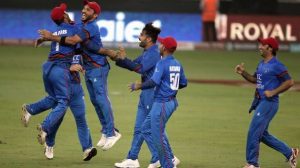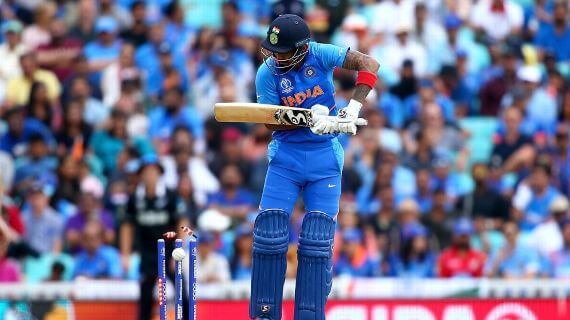Reading Time: 6 minutes
A curtain raiser on the World Cup 2019, by Vijayhardik. We are introducing a weekly column on Sports, every Thursday, beginning this week. A Different Truths exclusive.
 In the world of cricket, the experts and former players have built up the hype for almost a greater part of the year about the 2019 World Cup. Cricket boards have been chopping and changing their squads to find the right balance.
In the world of cricket, the experts and former players have built up the hype for almost a greater part of the year about the 2019 World Cup. Cricket boards have been chopping and changing their squads to find the right balance.
The tournaments before the IPL were treated as experiments by respective national teams get their chemistry right. The Indian Cricket Team too was on the bandwagon. In the proposed formula, key players of the team were constantly rested in a bid to keep the players fit and fresh in time for the marquee event.
While keeping your match-winners injury free before a global tournament is a sound strategy, it also opened a window to iron out the wrinkles dogging the much-vaunted Indian batting line-up in the middle order.
The decline of the majestic southpaw Yuvraj Singh after his battle with cancer and inability of the swashbuckling Suresh Raina against the short ball saw them both being dropped from the Indian cricket team.
The decline of the majestic southpaw Yuvraj Singh after his battle with cancer and inability of the swashbuckling Suresh Raina against the short ball saw them both being dropped from the Indian cricket team. Both the left-handers were the mainstays of the Indian batting line up. Their contributions were invaluable in India’s 2011 World Cup victory.
But their absence from the cricketing field created a vacuum in the Indian middle order. Not only did it leave huge boots to fill, but it also put more pressure on other players in the team.
To fill in this gap, various players have been tested in the position over the last few years. The roster of players that were indulged in this rotation door policy includes Manish Pandey, K L Rahul, Ambati Rayudu, Shreyas Iyer, Dinesh Karthik and the latest being Vijay Shankar. But none of them got a decent chance to stake their claim for the position.
Going in to the 2019 World Cup ‘who will bat at number 4’ is still a conundrum.
Going in to the 2019 World Cup ‘who will bat at number 4’ is still a conundrum.
This uncertainty in the batting order and over-reliance on the batting prowess of MS Dhoni to finish games for India has seen the team lose a few matches from advantageous positions and sometimes make things difficult crossing over the line.
There are quite a few examples which can be quoted where the Indian middle order either failed to take responsibility, lost the plot from an advantageous position or made a hash of it.
The most recent instance of the failure of the middle order to take up responsibility has come up in the warm-up match played between India and New Zealand.
The most recent instance of the failure of the middle order to take up responsibility has come up in the warm-up match played between India and New Zealand. The batsmen got complacent after getting a start and threw away their wickets. I do not find the excuse that it takes time to adjust to England after coming from India satisfactory.
Because the same story has been scripted in the past as well. In the last ICC Champions Trophy held in England in 2017, the Indian batting capitulated against the Pakistani bowling attack in an eerily similar fashion.
In the final of the 2017 ICC Champions Trophy, a fatal no-ball saw Pakistan pile up 338 runs.
In the final of the 2017 ICC Champions Trophy, a fatal no-ball saw Pakistan pile up 338 runs. In a stiff chase of 339 to defend the title, the innings began on a  disastrous note with Rohit Sharma falling to an inswinging delivery from a left arm pacer. While the second wicket fell because the batsmen were unable to play the swing. The rest apart from Hardik Pandya failed to put up resistance or value their wicket resulting in a loss for India.
disastrous note with Rohit Sharma falling to an inswinging delivery from a left arm pacer. While the second wicket fell because the batsmen were unable to play the swing. The rest apart from Hardik Pandya failed to put up resistance or value their wicket resulting in a loss for India.
The template for the Indian innings in both the matches against New Zealand and Pakistan was quite similar. The individuals involved changed roles with Rohit Sharma being the only constant. On both the occasions, Rohit Sharma fell early into a delivery swinging into him from a left arm pacer. It was Mohammad Amir in the Champions Trophy final against Pakistan and Trent Boult in the warm-up game against New Zealand.
Both these left arm quicks were the architects for the Indian batting collapse in their respective matches. After which the Indian batsmen threw their wickets in a bid to take the attack to the opposition. The only saving grace was a lone batsman trying his best to save the team the blushes. While Hardik Pandya did if for the “Men in Blue” in Champions Trophy, it was Ravindra Jadeja who stepped up against New Zealand with a 50 ball 54.
The concerns with the batting unit might jeopardise the Indian World Cup campaign.
With the World Cup getting underway from Friday and the buzz of preparations to iron out chinks in the armour over a large part of the last year the concerns with the batting unit might jeopardise the Indian World Cup campaign.
I make this assertion not just based on the above two examples. The Indian cricket team has given us many a glimpse of faltering in limited over games when the top three (Dhawan, Rohit, and Virat) or Virat Kohli have a bad day at the office.
The Asia Cup held at Dubai in 2018 gives us an account where the highly rated power packed Indian batting line-up made a mess of relatively easy chases.
The Asia Cup held at Dubai in 2018 gives us an account where the highly rated power packed Indian batting line-up made a mess of relatively easy chases. In the penultimate group match, India played Afghanistan. India were the favourites to win the match. The match went according to the script for almost 75 overs of the game.
I ndia after losing the toss bundled out Afghanistan for 252 runs. In response, India was cruising along to a victory having scored 140 odd runs in 25 overs, losing two wickets in the process. But the tables turned and with a middle-order batting collapse and Afghanistan smelled victory on course for a big upset. However, lower order partnerships shepherded by Ravindra Jadeja saw India salvage a tie and share the points with Afghanistan.
ndia after losing the toss bundled out Afghanistan for 252 runs. In response, India was cruising along to a victory having scored 140 odd runs in 25 overs, losing two wickets in the process. But the tables turned and with a middle-order batting collapse and Afghanistan smelled victory on course for a big upset. However, lower order partnerships shepherded by Ravindra Jadeja saw India salvage a tie and share the points with Afghanistan.
It could have been overlooked as an aberration if the Indian team did not have to battle a similar situation in the Asia Cup Final against Bangladesh. Once again, the odds were stacked in favour of India to win the title. On the day of the final India won the toss and elected to field first. The Indian bowling attack vindicated the decision by bowling out Bangladesh for a below par 222.
Critics, experts, and fans expected India to make short work of chasing down 223. But India found themselves in a spot of bother at 3 for 83 in the 17th over. It was prudent to consolidate for a while before trying to score runs without breaking much sweat. But the middle order overcompensated and could not rotate the strike in the middle overs. This bumped up the required run rate in the final overs and we did not have the luxury of wickets at the time. But India somehow managed to scrape a victory on the penultimate delivery of the match.
Though India used the Asia Cup and successive series as a laboratory for the experiment to find to fix the middle order conundrum, the solution remains elusive.
Though India used the Asia Cup and successive series as a laboratory for the  experiment to find to fix the middle order conundrum, the solution remains elusive. While victories hide the issue quite well, the defeats open it threadbare.
experiment to find to fix the middle order conundrum, the solution remains elusive. While victories hide the issue quite well, the defeats open it threadbare.
India is in England for the World Cup and is considered to be one of the favourites and a sure shot semi-finalist. But in a World Cup which seems poised to see some big totals posted, will the much-vaunted Indian batting line up which seems to have a fragile middle order rise to the occasion?
Photos sourced by the author from the Internet














